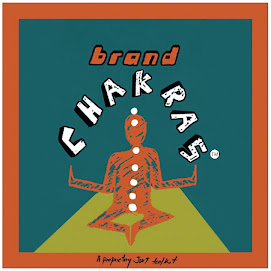Survival, Pleasure, Power, Love, Creative Expression, Transcendence, Spirituality: these are the seven basic life themes - based on the seven major chakras in the human body - that drive all human behaviour.
Writers, artists, musicians, activists, journalists, film makers with a message, and anyone in the business of Creativity… communication is vital to their being. They know their gift, have to honour it and must speak out their truth and stand up for what they believe in, even at the risk of being different, or standing apart. They are the Throat Chakra or Vishuddha people.
Throat Chakra people are said to have a greater sense of personal vision than the average person. Highly self aware, they have a through knowledge of themselves and believe in optimum use of personal faculties. Strong willed, clear thinkers with exceptional communication skills, and a strong sense of purpose, they have the urge to reach out to others and be heard. They have the ability to inspire others, and aspire for positions of power. Speaking the truth means a lot to them and they shun dishonesty and gossip. Artistic, they like to develop their own distinctive style, and like to try out new ideas. They are generally believed to be very trustworthy and meticuolous planners and appreciate others’ creativity.
Excessive throat chakra people could be blunt, with a lack of control of expression and a tendency to oppose others views all the time and an inability to listen. On the other hand, weak throat chakra people will have trouble expressing their views. Non participative and introverted, they are representative of the silent child archetype. Another manifestation of this chakra are the excessive “intellectuals” who can’t combine intellect with the spark of creativity.
Brands that stand for higher creativity, the search for truth, clear thinking, accuracy and
perceptiveness and artistic expression are Vishuddha brands. Think media brands. Think brands that speak up and take on causes. Think brands that are built on higher truths and creative expression.
Brand creators can ask the following questions of their brands. How does the brand help consumers to express themselves? Sunsilk’s Gang of Girls, TOI Lead India, HSBC’s yourpointofview.com are examples here. Is the brand honest in its expression, does it reveal a truth and perspective of life that has integrity? Why should the world listen? Does your brand make a difference to the world by expressing its truth? The Dove Campaign for Real Beauty is another example. Tata Tea speaks up for good governance, Femina speaks up for women’s empowerment. In fact, brands that “give you the confidence to speak your mind” is a strong women’s benefit these days. Citizen journalism too is a reflection of the growing need to speak up. Many telecom and mobile brands operate in this space, encouraging expression and communication. The rediffmail ad that ads a layer of purposiveness to e-mail communication is an example too, of a brand using its throat chakra differently.
Think Barkha Dutt and others like her – the journalists who don’t just report news, but stretch and strive to unearth truths, influence events and public opinion, and even create news! Think Al Gore, and the very title he is known for “An inconvenient truth.” Think of the great speech makers of history and how much the exact expressions of their truths have influenced us. Think lawyers, radio jockeys, even cricket commentators. Think the cousin or friend with whom it is impossible to win an argument!
In a different way, comedians would combine throat chakra with pleasure chakra, the seat of laughter. A message movie like MunnaBhai combines throat with heart chakra, the seat of universal love. While so many of Indian women’s film falls bang into throat chakra space – be it Astitva, Chandni, Water and the like, because they in fact deal with topics hitherto swept under the carpet and seek to release suppressed emotions.
Consumers who lack strong throat chakra qualities seek to be extroverted, aim to be the center of conversations, want to say the right thing at the right time, like the idea of being able to speak fearlessly, and change the way the world perceives them by saying what they mean, and meaning what they say. Those who are already inclined to expressiveness even more appreciate brands that reflect their own search for creativity and boldness of speech.
Key brand payoffs that operate in this chakra are:
Makes me speak only the truth and nothing else; helps me convey my views without any fear; helps me to say the right things at the right time; brings out my creativity and innovative ideas; makes me feel more intelligent than others around me.
The most recent examples would of course be cricketers – those with balanced throat charkas who speak calmly reflecting honesty and integrity versus those whose tongues run away ahead of them, constantly inviting trouble and engaging in verbal duels! Not to mention politicians with a penchant for putting their foot in their mouths!
This post first appeared as an article in The Brand Wagon, The Financial Express, June 10, 2008
 Efficiency and indulgence, refuge and escape, conformism and showmanship, child-like delight and intellectual growth, the payoffs from technology in personal life are dichotomous says the latest Brand Chakras™ study. In work life, technology can facilitate democracy or meritocracy, be a performance leveler or a performance discriminator, foster conformism or creativity. Technology can be functional and symbolic, in the temporary and immediate or in the permanent and the long term. It can help social anchoring or enhance social clout.
Efficiency and indulgence, refuge and escape, conformism and showmanship, child-like delight and intellectual growth, the payoffs from technology in personal life are dichotomous says the latest Brand Chakras™ study. In work life, technology can facilitate democracy or meritocracy, be a performance leveler or a performance discriminator, foster conformism or creativity. Technology can be functional and symbolic, in the temporary and immediate or in the permanent and the long term. It can help social anchoring or enhance social clout.

